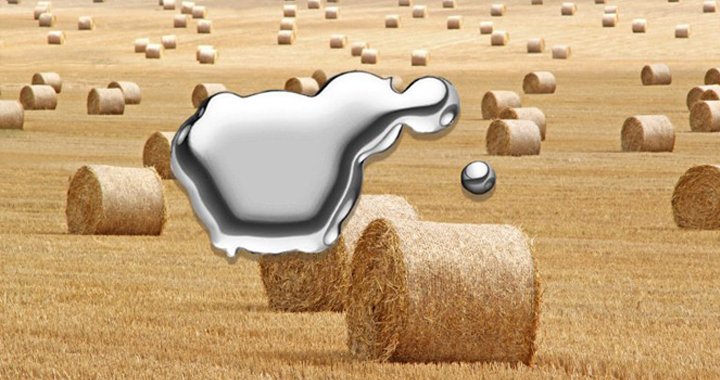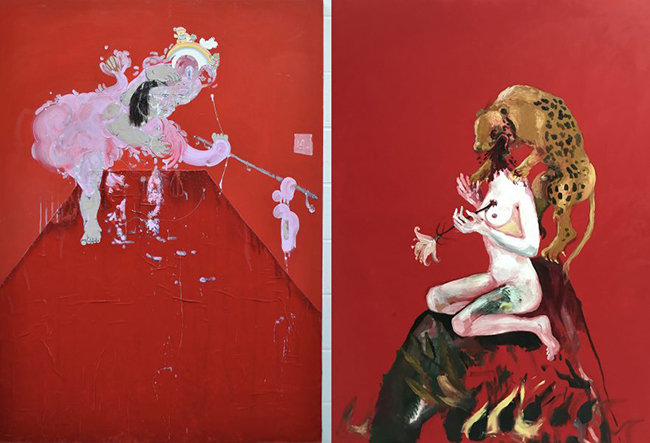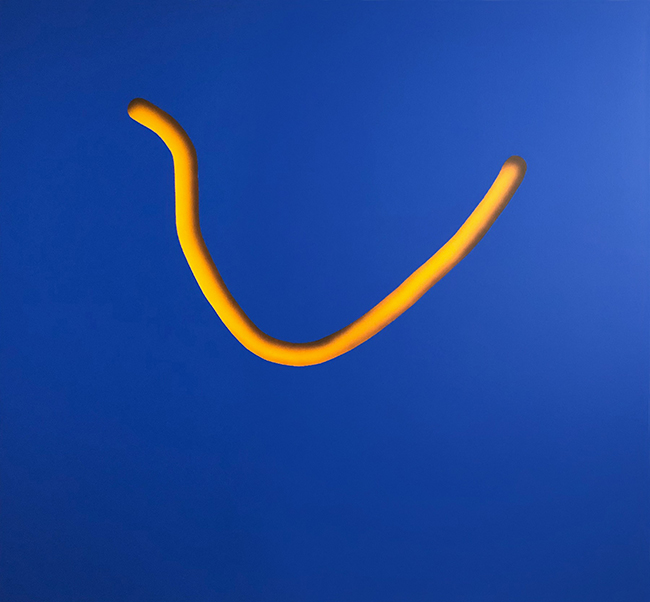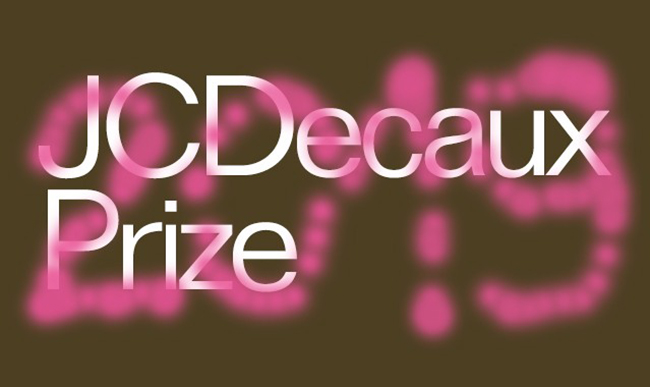
Baltic exhibition guide
September
09/09/2019
September is already here and Arterritory.com offers its readers to look into the exhibitions and great art events going on around the Baltics!
TALLINN
Kate Lyddon and Angela Maasalu at Art Hall Gallery
17 August till 13 October

Until 13 October, Kate Lyddon and Angela Maasalu’s exhibition “Throbwerk” is being presented at the Art Hall Gallery in Tallinn. The curator of the exhibition is Tamara Luuk. London is one of the places where Estonian artists prefer to study most. When they return, they are mostly educated conceptualists – creators with a sharp analytical and critical sense. But there are also other kinds of artists in England – there is another London, where sentiment is in the palm of your hand and emotions are elevated. The exhibition of works by Angela Maasalu (who has studied art in Tartu, Tallinn and London) and British artist Kate Lyddon tries to show the less well-known side of British impact on the current creative scene.
In this show both artists simultaneously reflect on physical sensations that are reactions to strong emotions. “Thribwerk” is loud (almost screaming), painful, funny, poetic and cruel, and points to one possible way of being an artist nowadays.
“Both [artists] are stubborn, emotional and passionate. Both place their trust in imagination, instinct and intuition. Neither minds the currentness of their expressive means. They work with intimate and personal everyday subjects, from which both have conjured something utterly powerful and bodily; a physical imposition of their femininity,” writes Tamara Luuk.
“Lyddon’s bodies bulge, bleed, shift, seep and drool. Their abject flesh—filled with solid blues, pinks and greens—is restless, active and consuming… While the bodies that inhabit the spaces of Angela Maasalu’s paintings and drawings have a sparser, scratchier quality, colour also determines the narrative or emotional intensity of the work, which powerfully re-imagines fragments of autobiographical experience. The ‘heart’—inasmuch as it connects to desire, humiliation, vulnerability and loss—becomes the organ of the work as it were, a throbbing machine of visual translation,” writes Alice Butler in her colourful essay for the exhibition.
Dénes Farkas at Temnikova & Kasela gallery
3 September till 2 November

At Temnikova & Kasela Gallery, Farkas is currently showing several installations executed in different mediums. Photographic works, furniture built by him, and sound recordings are abstract representations of things, people and stories that have been important to the artist at certain points in his life. Farkas refrains from revealing the actual events that inspired the works. Instead the aim is to lift small details out of context and, by placing them together in one room, allow viewers to re-edit the narrative.
Dénes Farkas (born 1974, Budapest) is an Estonian-Hungarian post-conceptual photography and installation artist who lives and works in Tallinn. Since the second half of the 2000s, his work has focused on reducing a social structure that he studies into the shape of a representative model uniting a photograph that is as laconic as possible with its title. He mainly focuses on critique of visual representation, the relationship between image and text, and the aspect of social determination in human experience.
Tallinn Photomonth
6 September till 3 November

From 6 September until 3 November the contemporary art biennial “Tallinn Photomonth 2019” will take place all around the city. Included in the main programme are three international group exhibitions at different art institutions in Tallinn, a film programme and a contemporary art fair.
From 7 September till 20 October the group show “When You Say We Belong To The Light We Belong To The Thunder”, curated by Heidi Ballet, will be on view at the Contemporary Art Museum of Estonia (EKKM). The exhibition explores complex realities in which concepts of belonging are set against the assumed freedoms of ownership. Contrary to notions of belonging, the ownership of land has rarely required an obligation of care. It has been implemented so widely across borders and communities that an extractivist relationship to the earth and people is now normalized, with dividing lines firmly set across race, gender and class. The exhibition title is borrowed from the lyrics of the 1985 pop song “We Belong” by Pat Benatar. A few months after “We Belong” climbed to the top of the pop charts in the West, Mikhail Gorbachev announced Perestroika, which led Estonians to openly protest their belonging to the Soviet Union. The ecological movement against phosphorite mines that peaked in 1987 became an important catalyst of Estonian independence and a national identification with forests (established in the early 20th century) still plays a role today. The Estonian case adds complexity to the relationship between nationalism and environmental protection while the memory of the Cold War’s Eastern Bloc questions the lines of sympathy along which future alliances will be built.
Another group show, “Mercury” (curator: Post Brothers), will be on view at the Tallinn Art Hall from 14 September till 17 November. Photography as a material process had quite a short life. One could mark the endpoints of its historical moment as ranging from the toxic mercury fumes of the daguerreotype to the computer-generated quicksilver of the shape-shifting android assassin T-1000 in the film Terminator 2. Now the field of photography has itself become mercury-like. Liquid, protean, mutable, and fast flowing. Magically reflective, moving at the slightest touch. It has been detached from its roots and freed from its baggage of accountability and physicality. Digital photography is more data-collecting than picture making. Most of our snapshots will never be looked at, even once, not even by ourselves. They are hardly pictures, only sleeping data, existing and not existing at once. Today when we photograph, we mostly use our phone – a device named for its capacity to transmit audio signals. Perhaps the photographic imagery we produce now is closer to spoken language than it is to analogue photography?
The exhibition “Let the field of your attention… soften and spread out” will be on view at Kai Art Center from 21 September till 1 December. The title of the exhibition is derived from a bodywork exercise in the handbook “A Widening Field: Journeys in Body and Imagination” (2004) composed by dancer, teacher of the Alexander technique and craniosacral therapist Miranda Tufnell and installation artist Chris Crickmay. The art centre states: Like the approach put forth in the book, we consider the creative arts through an emphasis on receptivity to our bodies and surroundings.
Amid crisis, like that of the collapse of ecosystems caused by human activity, we may gather around stories of recovery. The practices of the artists featured in the exhibition span visual art, moving meditation, deep listening, writing, textile and traditional medicinal knowledge. The gradually unfolding curatorial choreography is informed by the seasonal transition towards darkness and dormancy inherent to late autumn and early winter in Estonia. It brings attention to different registers of visibility, as we gather through small private moments and those more public.
RIGA
Two exhibitions at Kim? Contemporary art centre
22 August till 6 October

In her solo show “When Hell Is Full, the Dead Will Walk the Earth”, Līga Spunde focuses on the ruthlessness hidden behind forms of everyday communication and information exchange on the internet. She analyses “hate culture” not just online, but in various forms where users exchange chillingly inhuman texts, images and videos that can sometimes also turn into real, horrifying acts.
“ANONYMOUS. You first tried to chat sometime around the beginning of the 2000s when the internet also appeared in your home. It was exciting and terrifying at the same time. It was an opportunity to try out various identities, ages, genders and roles. Growing up happened fast and digitally. It was an absolute twilight zone, simultaneously a land of opportunity and new information. Here your shortsightedness was compensated by the blindness of everyone else who was there. You soon started to get to know the darker sides of human nature, learning about different perversions, hate, and obscenities in their broadest form.
ZOMBIE. You met me at a very strange time in my life,” says the text in Līga Spunde’s exhibition.
At the centre of Liene Pavlovska’s exhibition “Close Your Eyes and Smile” is an exploration of the correlation between individual and group responsibility. It looks at the structure of game shows and similarities between how these and national and international elections are organised whilst upholding the contemporary myth of luck. In her exhibition, Liene Pavlovska changes the function and use of the Kim? Space, making it part of a performative space where staged gestures interact with visitors’ viewpoints.
“How Marko Mäetamm met Helēna Heinrihsone” at MākslaXO gallery
29 August till 7 October

One of Estonia's most prominent contemporary artists, Marko Mäetamm, and one of the most vibrant of Latvian painters, Helēna Heinrihsone, met for the first time in 1998 at the artist residency Litografiska Academia in Tidaholm, Sweden. The idea of a joint exhibition emerged when the artists met again after 20 years – at the contemporary art fair ART VILNIUS 2018. The exhibition is about the wish to “connect the incompatible”, to highlight each other, and to compose a portrait story about the artist and his/her art.
“Thoughts about my friendship with the well-known Estonian artist led me to a reflection on the evolution of humanity through the centuries. The development of the body, the changes of the skull shape – from a boulder to a polished diamond. The paintings are perceived as the alphabet of development with a lightness of watercolour and a touch of fun – Latvians, a thieving nation living in trees, and Estonians – early inhabitants of peat bogs,” says Helēna Heinrihsone.
“To see Helēna’s studio, I first had to go and stay in Helena’s apartment. Helena’s apartment was mind blowing. And Helena’s hospitality was mind blowing. A lot of red wine, delicious food, interesting conversations about art, airplane crashes and life on Mars. All through the night. In the morning, when I climbed up to Helena’s studio upstairs, she was already working. Large paintings everywhere. Some finished, some she had only started. I didn’t want to disturb her, so I just looked around to see if I could find some ideas for my works in our joint exhibition. On one table I found a book – a golden book: “1000 NUDES, Uwe Scheid Collection”. I started to look at it and sucked me in so I completely that I forgot where I was and why. And who I was. And of course, I forgot about time, so I missed my bus back to Tallinn and had to stay in Riga for another night. When I eventually got back to Tallinn, I was so disappointed about getting myself hooked into this book and not looking enough as I should have at Helena’s works to get some ideas. Some months later, I started my series about nudes and women. I didn’t see any particular reason why I wanted to do this, but I wanted to. And I was really enjoying it. Then suddenly I realized – this was all because of this book I saw in Helena’s studio! And these are all these works I want to show together with her!” explains Marko Mäetamm.
Mārtiņš Ratniks’ solo show at gallery Alma
30 August till 11 October

From 30 August till 11 October, Mārtiņš Ratniks solo show “All satellites will burn up” is on view at the gallery Alma in Riga.
The exhibition could be described as a study of the captivating energy of transformation and implosion, in the process of which an archive of digital images and video sample documents have been compiled over a period of several years. It is comprised of sequences of photographs, scanned images, filmed video recordings, and recordings of generated and transformed video signals. The archive was created without a pre-planned outcome or purpose. Seemingly chance motifs have been documented, including: natural landscapes and manifestations; flying moths and satellites in the night sky; dead insects and scenes from a micro-world; image modulations and video signal interferences. What all of these motifs have in common is the impossibility of capturing them and documenting them repeatedly. The result is a video composition that takes you on a journey between the continually changing forms of visible and invisible energy that we can perceive. All we see has already changed, and all satellites will burn up long before time stops.
Mārtiņš Ratniks works in the fields of audio visual performance, installation and video art. He studied at the Art Academy of Latvia’s Visual Communication Department. He is a member of the electronic art and media centre “E-LAB” and the new media culture centre “RIXC”. Since 1998 he has been one of the participants in the artists’ group F5 (“Famous Five”). As a member of F5, he has taken part in several major international exhibitions, including representing Latvia at the 25th São Paulo Biennial (2002) and at the 51st Venice Biennale (2005). For over a decade he has collaborated with the experimental sound artists’ collective Clausthome, creating audio visual performances. Currently Mārtiņš Ratniks is a lecturer in media art and graphic design at the Art Academy of Latvia.
The centenary exhibition of the Art Academy of Latvia
20 September till 17 November

From 20 September till 17 November the centenary exhibition “Academia”, of the Art Academy of Latvia, will be on view at the exhibition hall “Arsenāls”.
The starting point of the exhibition concept is the Plato Academy, which in Ancient Greece was a defined training model in the discipline of philosophy. The academy itself was located near Athens, and it was particularly important for the free atmosphere in the olive garden to reach philosophical thesis and judgment as a result of the exchange of views and opinions.
In modern terminology, the word “academic” sometimes receives heavy shade, thus the format of the exhibition will be formed in a way of viewing the academy in its original sense – a free, creative thinking process. Inspired by this example, the exhibition is intended to rise above the space, atmosphere and zeitgeist of the Latvian Academy of Arts, creating an exhibition that could be called “living history.” Students and educators of the LAA will participate in the exhibition, each with their vision for the specific department they represent. The project's main goal is to show the direct link between our new generation’s activities and global processes in the international art scene.
VILNIUS
Jurgis Tarabilda “Into the Non-Being”
29 August till 28 September

From 29 August till 28 September, the solo show “Into the Non-Being” by Jurgis Tarabilda is on view at Meno Niša gallery.
Tarabilda: In these times of hyper-rational art rhetoric, when ideas can be given a greater value than emotional insights or intuition, I recommend experiencing this space without a specific verbalised input. The very word idea suggests to me of something that doesn’t exist, so in this case, any contextualisation of the works would give them an unnecessary meaning.
The creative process itself is intuitive, but the final picture is the culmination of a technically methodical and extremely accurate process that begins without a prior understanding of how the work will end.
Realistic, rational shadows on the surface are combined with intuitive shapes, thus creating an interaction between the physical plane of the picture and the shape which is depicted. The works are not representative of anything; they neither refer to particular contexts or themes, nor provide visual material for an external idea or conceptual feeling, but rather disturb the sense of seeing and understanding.
Minimal gestures in the works mislead imagination and leave an open space for the viewer to stay in – between perception and reality.
Two exhibitions at the gallery Vartai
5 September till 11 October

From 5 September till 11 October, the gallery Vartai will present the solo shows “Metonymy” by Dominykas Sidorovas and “Documentary Exactness” by Gabrielė Adomaitytė”.
Metonymy (from Greek metōnymía – a change of name) is a figure of speech that involves replacing one concept with another on the basis of the objects signified by those concepts being fundamentally related as part and whole, cause and effect, inside and outside, agent and result, site and event, etc. Morse code is the metaphor that Dominykas Sidorovas usually invokes to describe his work or, more precisely, creative method. It consists of individual sounds which signify letters. These sounds form sentences, paragraphs, and finally an entire novel. Likewise, the author’s paintings are individual sounds which carry meaning.
The motif that is at the centre of the artist’s work is the object. The painter traces the signs of his surrounding environment by using its basic objects, their shapes, and chromatic codes as the point of departure. He constructs the signs as well as their combinations. Through abstracted marking, Sidorovas looks for interrelations and underlying meanings.
Lithuanian artist Gabriele Adomaityte (b. 1994) paints from photographs, Xerox copies and many other forms of printed matter. In some of her works, a white frame around the image exemplifies that the picture is essentially a cut-out from a much larger and boundless image world. The physical qualities of the source material are somehow preserved in the paintings, like the crumples and folds in a scan printed onto paper or the sun-bleached page of a book. All kinds of sources have been used, from old catalogues of Baltic jewelry to glossy fashion advertisements, from scientific diagrams to medical nano-photographs. Painting these images, Adomaityte addresses the amazing multiplicity of the visual world.
Transforming this visual information into paintings, Adomaityte relies on her great technical skills in tracing, copying and duplicating by hand. In her paintings, an image is reproduced more than once, thereby creating the impression of a sequence or a loop. During the process of painterly reproduction, slight transformations take place. The phenomenon of “generational loss” comes to mind.
JCDecaux PRIZE
20 September till 30 November

From 20 September till 30 November, the JCDecaux prize exhibition “Not at Anyone’s Request” will be on view at the Contemporary Art centre in Vilnius.
There was a certain point when something that was neither vitally nor economically necessary arose; and today, we still carry on fostering this impulse that can liberate us from destiny and external will, letting us expose our own naivety and weakness in the pursuit of the incalculable. This story is written by disobedient and shaky hands – not at someone's request, but for the sake of what might be important.
The JCDecaux Prize is a cycle of yearly exhibitions established in 2016 by the Contemporary Arts Centre and JCDecaux that aims to encourage young Lithuanian artists to create new works, facilitate their presentation in Lithuania and abroad, and raise society’s interest in contemporary art. The prize of 3000 euros, provided by JCDecaux, is granted to one artist (or artist group) participating in the JCDecaux Prize exhibition and is based on the work’s originality and relevance of artistic expression.
This year the participating artists are Agnė Jokšė, Milda Januševičiūtė and Miša Skalskis, Emilė Skolevičiūtė, Arvydas Umbrasas, and Gabrielė Vetkinaitė.